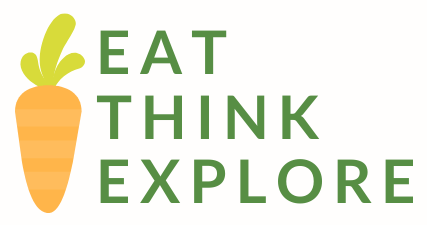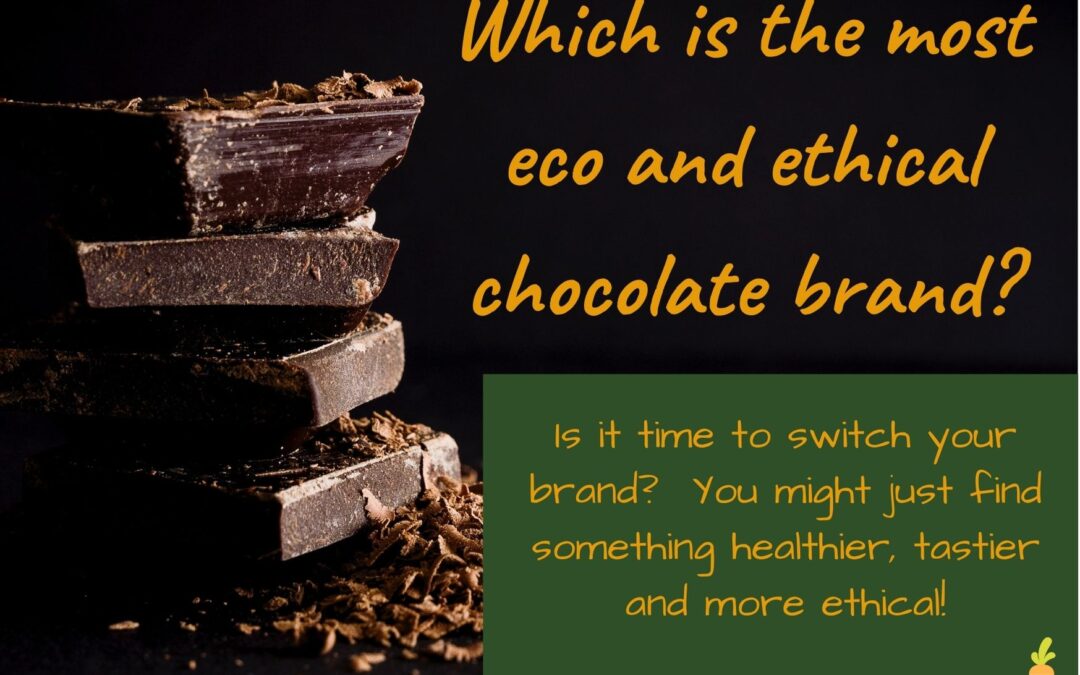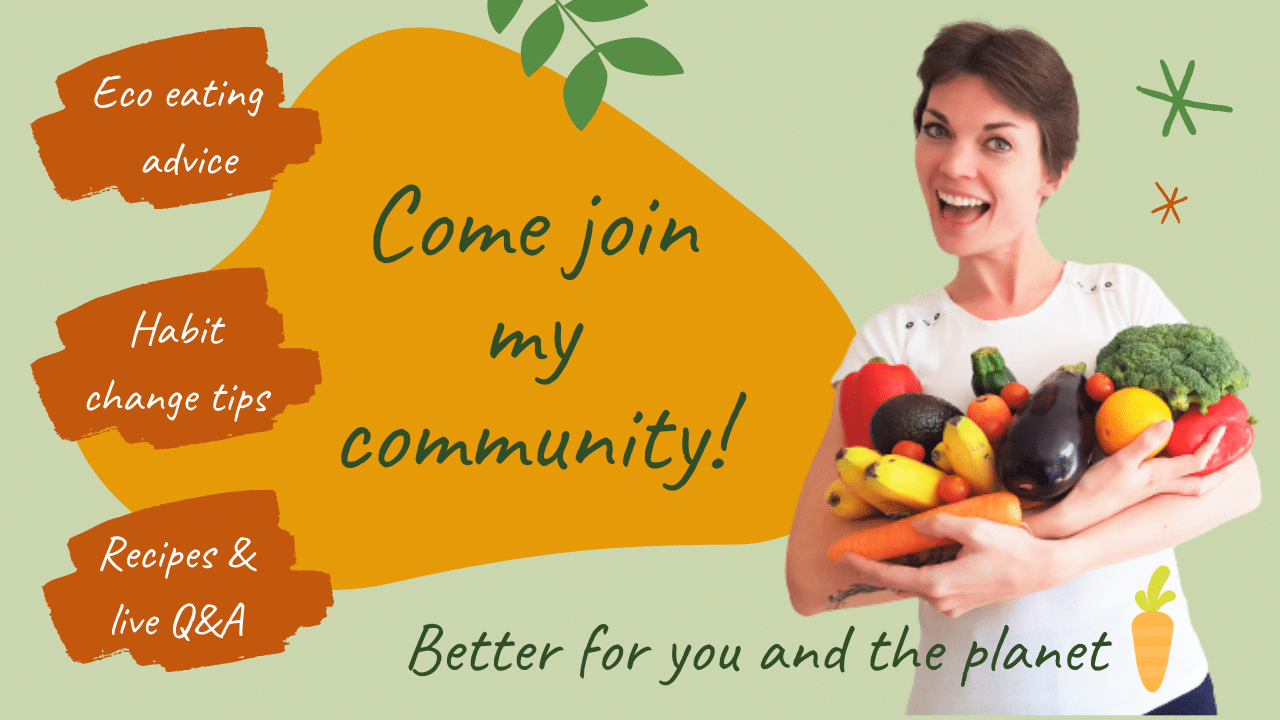Have you ever wondered what the most eco and ethical chocolate brand is? Probably not! Many of us eat chocolate without really thinking about where it’s come from, how it was made etc. We (or at least I certainly did) ASSUME that the big companies are being responsible and ethical in how they make it, or we’re in denial that our lovely chocolate could have a negative impact at all.
This one pains me, but I need to know the truth about chocolate after hearing a few rather disappointing things about child slaves working on farms in Africa. I have already switched to recyclable packaging only brands, but I am rather worried that my cheap usuals are about to become undesirable…
Do you ever wonder about this? Is there a better choice you could be making with your chocolate that will result in less suffering and maybe even be a little bit healthier too? That’s two causes of guilt reduced! Worth checking out I’d say…
So let’s see…
What do we need to think about when choosing our chocolate brand?
Where is it grown?
Unfortunately, cocoa beans can only be grown in tropical regions, which means that we will have to accept that they have travelled if we want to continue to consume chocolate in non-tropical regions.
More than 70% of the worlds production comes from 4 African countries (Ghana, the Ivory Coast, Nigeria and Cameroon). Over 50% from Ghana and the Ivory Coast specifically. For us in the UK, the African countries are a little closer, so the carbon footprint in terms of transportation miles will be a little lower…
Aside from large-scale production in Western Africa, a significant amount of cocoa is also grown in Latin America. This is where the majority of organic cocoa originates.
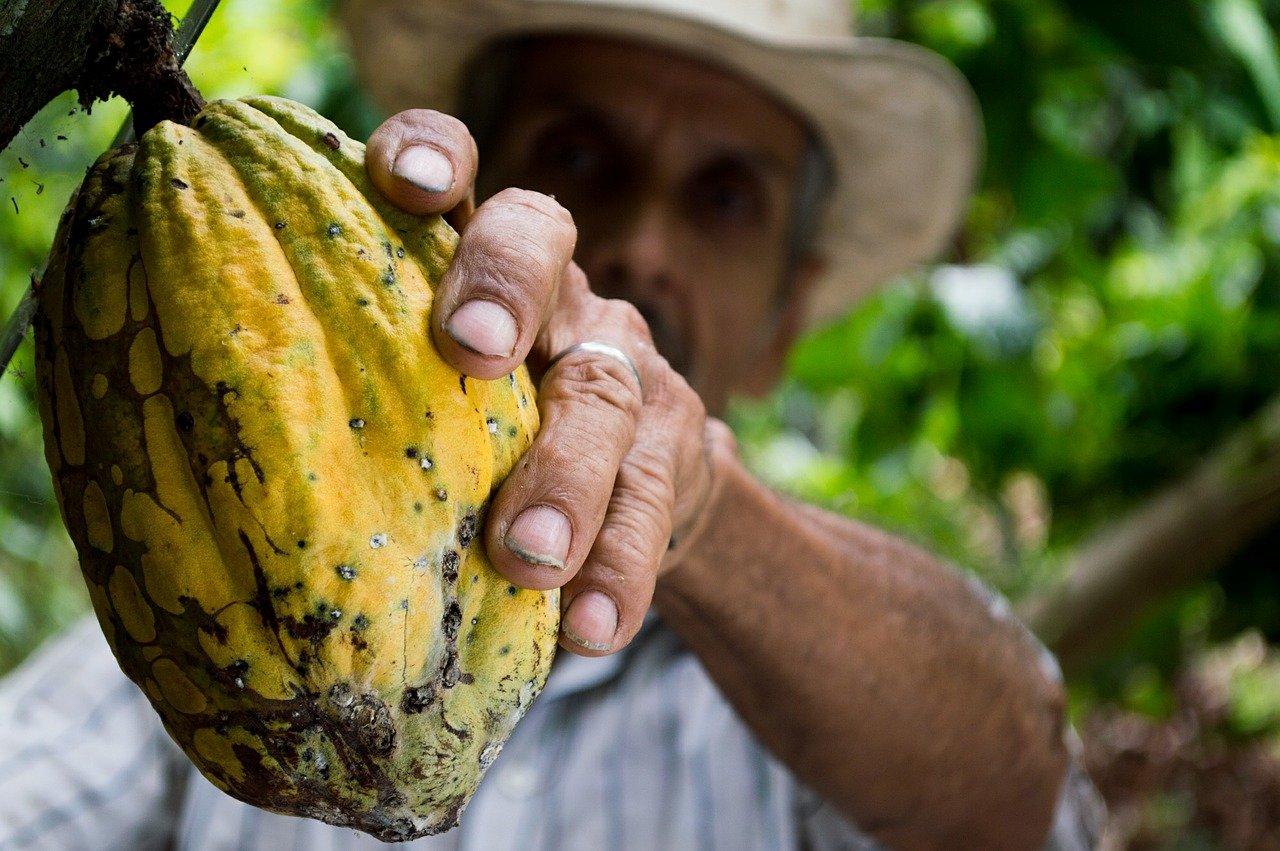
How is it grown?
Is it organic? Organic beans come with benefits to our health (less chance of contamination with pesticides and more nutrients), and to the environment. Organic cocoa is usually grown more naturally under the canopy of other trees (rather than in large deforested areas), which helps to improve local biodiversity massively.
Whilst there are some large-scale plantations, about 70% of the worlds chocolate is grown by smallholders [2].
Large plantations come with their own issues, as they are often cleared areas of rainforest which then need to be heavily irrigated and fertilised to grow the cocoa. Cocoa actually grows best amongst the rainforest trees as they provide shade, water and fertiliser for free! These are unlikely to be organic and have been accused of using slaves on their farms.
Estimates are that up to 40% of cocoa is slave grown. But wait – wasn’t that abolished? Apparently not…
A study conducted in 2018 confirms that at least 30,000 people are victims of modern slavery in the cocoa industry in Ghana and Ivory Coast (Global Slavery Index, p.49). Adults and children are forced to work on cocoa farms without pay, sometimes bought or traded from the poorer neighbouring countries. These people are sometimes locked up overnight, or beaten if they try to escape.
The smaller holdings don’t fare any better. Across Ghana and The Ivory Coast, about 2.5 million cocoa farming families produce more than 60% of the world’s cocoa (CocoaAction, WCf/Cacao Barometer, 2018). This means it’s individuals working on family farms to grow the cocoa, usually as their main crop. These farmers sell to wholesalers who have all the power as they can skip that family if they ask for a higher price.
Did you know that the cocoa farmers in Ivory Coast and Ghana earn only 3 to 6 per cent of the chocolate bars’ retail market value [2].
Cocoa farmers receive $ 1.37 per kg beans in Ivory Coast and $ 1.52 in Ghana. These excessively low prices lead to a farmer income of only approximately $ 0.78 per day (Cocoa Barometer 2018), which is way below the extreme poverty line of $ 1.90 per day (World Bank standard).
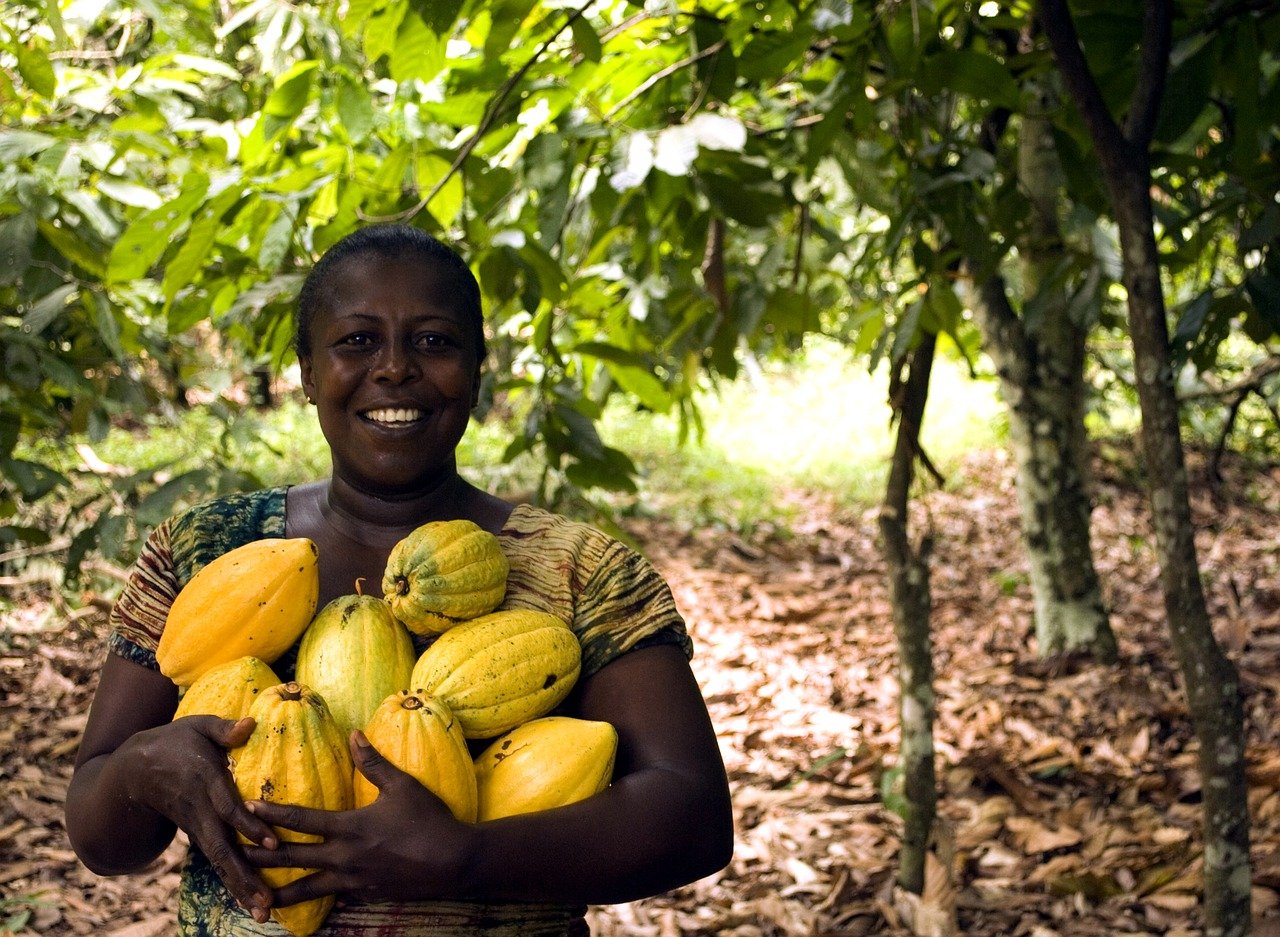
What is the impact of this?
A low and unreliable price (the price fluctuates depending on the world cocoa price and how much cocoa is in the market at the time) keeps these farmers in poverty. To make ends meet many use their own children to increase the amount they can grow and therefore bring in more money to feed them.
In Ghana and Ivory Coast, 1.56 million children work under illegal conditions because their parents are unable to earn enough (NORC report, 2020). 43% of children 5-17 living in cocoa growing regions were found to be doing hazardous work – clearing, heavy loads, chemicals, sharp tools, working long hours or doing night work.[3]
The cocoa farmers in West Africa are paid far too little for their beans to be able to escape the vicious cycle of poverty. Desperate to make a living, many West African cocoa farmers resort to illegal and dangerous child labour or make use of unpaid, forced labour on their farms (Cocoa Barometer, 2018).
Whilst it’s sad for us to think that there are small children working all day whilst ours play, the sadder reality is that this often means they do not have time for school, condemning them to a life of poverty as adults.

This isn‘t a new issue, and has been talked about for years, and all the big brands talk about how they are working to reduce it in their supply lines, but after over 10 years of small scale efforts, the situation is largely unchanged. It’s easy to blame these companies, but we, the consumers, demand cheap chocolate and consistently choose our chocolate brand for price, so we have to accept some of the responsibility for our head-in-the-sand approach.
What can you do to ensure that your chocolate is slave and child labour free (and just generally better for local communities)?
The sad reality is that the big brands do not have full traceability of where their cocoa comes from, and cannot therefore guarantee that it’s slavery or child labour free. The fact that they state that they are working to remove it from their supply lines implies that it exists.
To avoid slavery, avoid the big brands, until they can properly track their cocoa and assure us that it’s from monitored farms anyway.
Smaller companies, sometimes called bean-to-bar, have much better levels of traceability, usually working with a selection of farms, so they have a much better idea of how they are run. Many of these companies also pay better prices for their cocoa, removing some of the driver behind child labour.
Latin American farms are more likely to be organic, meaning they are under greater scrutiny and so neither slavery nor child labour have been documented on these cocoa farms. I can’t guarantee it’s not happening, and some farms probably employ these practices, but it isn’t widely documented as it is in Western Africa.
So you could choose to buy from companies that use organic Latin American beans.
You could also use companies who state that they are slavery free, like Tony’s Chocolonely (more on them further down).
If you’re feeling appalled that this was happening without your knowledge and want to do more than just boycott their products, you can Demand that your chocolate manufacturers and those in charge take action to ensure that cocoa is produced without slavery. Visit the Global Exchange site and learn how you can do more. This is an organization that offers many ways to help ensure fair labour standards worldwide.
Use the certifications as a guide
UTZ and Rainforest Alliance
- This ensures that rainforest has not been cleared away for unsustainable plantations.
- Sourced in a way that is fair to producers, suppliers and the environment.
Fairtrade
- Sets a minimum price that should cover the cost for growing the crop and make the price more stable, helping to lift families out of poverty.
- There are secondary premium payments for farmers to invest in their own community too.
- Does not guarantee lack of slavery.
- Covers a lot of products, including the sugar and vanilla in the chocolate.
- Aims to protect workers basic rights – require employers to bridge the gap between actual pay and living wage.
- Help train in eco-friendly practices.
- Downside – to be FT certified, they must pay fees. This can be too much for local entrepreneurs.
- Fairtrade products command a premium price, which can put them out of reach of poorer consmumers.
- The minimum price puts no drive to improve quality… Some say that the focus should be on helping the farmers to improve the efficiency and yields of farms, not just paying more for the same product…
Will organic, Fairtrade cocoa drive the price up massively?
According to Tony’s Chocolonely report [1] the price of cocoa is a very small part of the cost of a bar – even paying their premium prices, the cocoa is still only around 8-9% of the bar. The point here is, that paying 2-3 times more for cocoa is not going to massively increase the price of a chocolate bar!
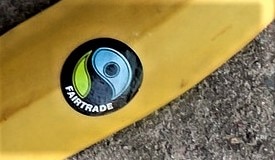
What is the chocolate made of?
The main ingredients of chocolate are:
- cocoa (discussed above).
- something to sweeten it (sugar or sweeteners).
- vanilla extract is a very common addition in very small amounts.
- milk solids (for milk choc) – vegan sometimes use a rice powder. sed for flavour.
- sometimes other oils are added – palm, shea and coconut are the most common. Usually only used by the big brands.
- an emulsifier like soy or sunflower lecithin are often added, especially to the big brands. This helps prevent the cocoa and cocoa butter from separating and blends flavours for a smooth texture. It’s only used in very small amounts – so the soy should not be an issue.
From all the ingredients in our chocolate, if we are talking CO2 emitters, the biggest environmental impact comes from milk powder. For example, Tony’s Chocolonely report that their average emission is 5.5 kilos of CO2 per kilo of chocolate of which 42% is from the milk. Therefore a dark chocolate with minimum milk solids will be better for the environment, as will a dairy free bar (which uses something like rice powder instead).
The oils like palm come with their own envrironmental accusations and should be avoided.
How sustainable is the packaging?
Some companies have gone to great lengths to make sure that their packaging is biodegradable and responsibly sourced. Others have made sure that it is recyclable. What does your brand do?
Something really simple like card and foil can be really easily recycled by most councils. Compostable wrappers are great if you have composting facilities, but many don’t…
Who’s dug up an old foil wrapper from 20 years ago and been amazed at how intact it is? I have, so can say for sure that these types of wrappers will be with us for a long time and we need to stop using them! Some of the foil wrappers can be recycled through Terracycle, but this requires a time commitment from consumers so it’s likely that most end up in landfill.
How easy is it to get hold of?
There’s something about having to buy your chocolate online which seems wrong (not only because I hate paying postage on top!). It feels like it must increase the footprint to have delivery trucks driving everywhere to individual houses.
So I’d rather just get it from shops near me, therefore I think this is an important consideration…
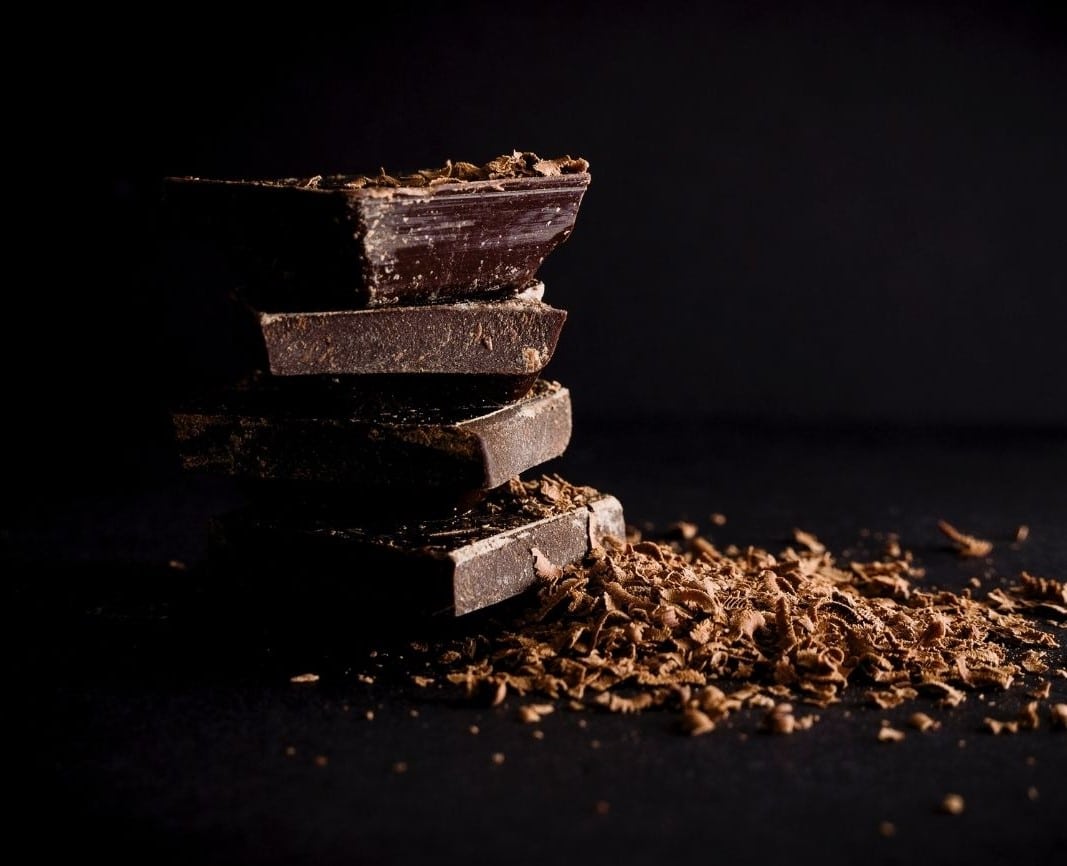
So how do chocolate brands stack up?
Let’s take a look at some of the big brands:
The chocolate supply chain starts with millions of cocoa farmers, and ends with millions of consumers. Somewhere in between are a number of companies that control around 70% of the world cocoa market.
I’ve used a 2021 report by Mighty Earth, National Wildlife Federation, Be Slavery Free, Green America and INKOTA to look at this [5]. They score 31 chocolate companies and cocoa suppliers (covering about 80% of the world’s chocolate supply) on human rights due diligence, transparency and traceability, deforestations and agroforestry, living income policies and child labour.
Alter Eco (a US company), Whitakers (Australian) and Tony’s Chocolonely (from the Netherlands) were the winners, which is good news as that means there’s a high scoring brand available to most of us around the world.
The big hitters; Cadburys, Galaxy/Mars and Nestle were all equally bad really.
Mondalez (Cadburys) are good on deforestation and climate, but poor on agroforestry (promoting growing cocoa in amongst forest). Their packaging is also only recyclable via Terracycle which is a negative.
Lindt are a little better, falling down on their human rights due dilligence only. Their packaging (on their main bars) is card and foil so scores well there on recyclability. They are committed to 100% traceabilityof their beans, andhave a farming program to help their farmers in their communities.
Mars (Galaxy) have issues with their traceability and transparency (meaning they can’t track their cocoa well or disclose where it came from), need to do more to ensure their growers receive a living wage (contribute to child labour) and agroforestry (sustainable growing practices). Most packaging is not recyclable (possibly Terracycle), although Galaxy is recyclable in local council bins.
Nestle (Kitkat and Malteasers) score very badly for agroforestry and poorly for transparency and traceability. Packaging is again very hit and miss.
Hershey’s scored well on deforestation climate and agroforestry, but poorly on paying their farmers a living wage.
Definitely no guarantee that we’re not contributing to the suffering of others from any of these brands… are there others which can do better?
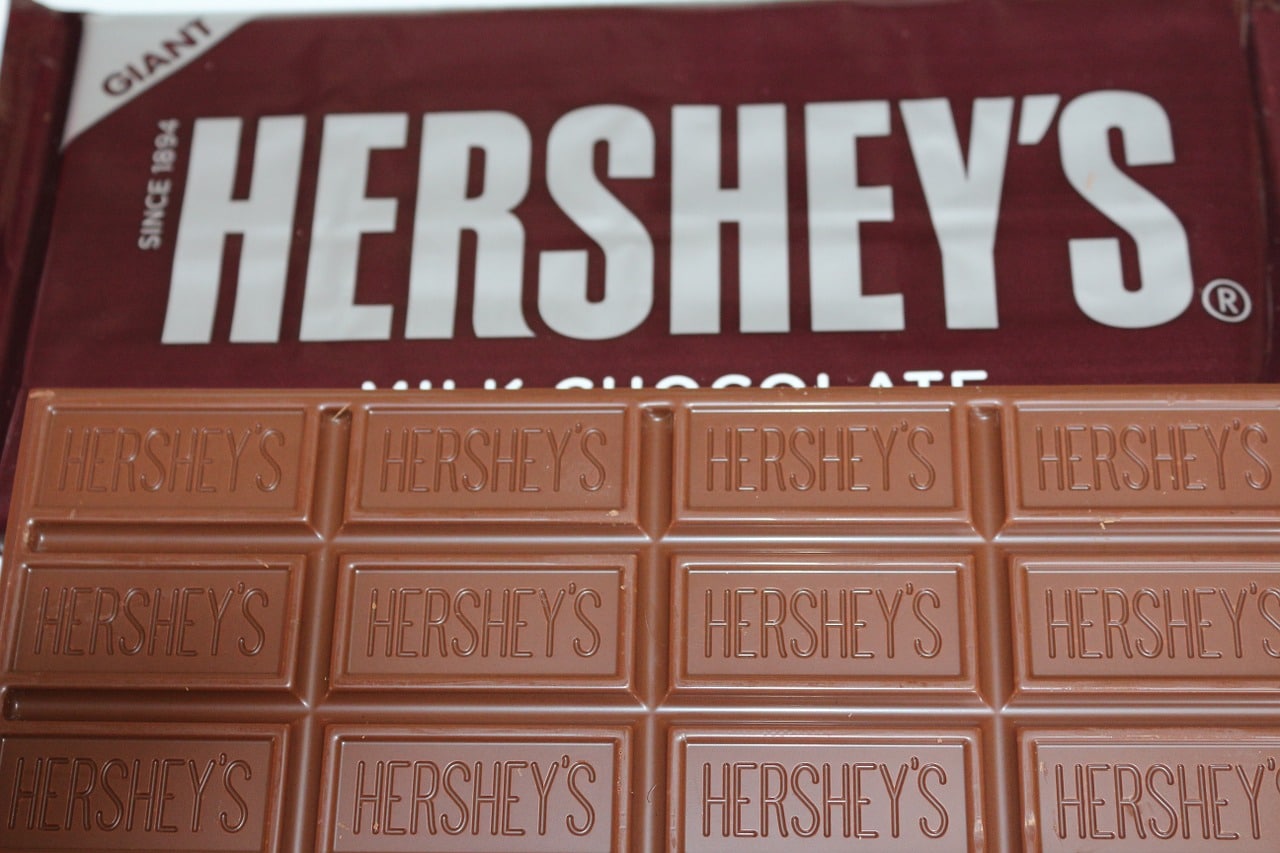
Choose to support a small chocolate brand
Whilst it can seem that our chocolate choices are limited, there are actually tons of chocolate producing companies out there – more every day it seems as people start selling chocolate with more of a luxury taste, or to solve some of these eco and ethical issues. I couldn’t taste them all (I did eat a LOT of chocolate in the course of writing this for you – you’re welcome!), but I had a go at a few 🙂
Conscious
A handmade, organic, raw, vegan chocolate made using coconut sugar in the UK. The packaging is fully compostable and the bars come in LOTS of flavours.
Being vegan, they only come in dark, with around 60% cocoa solids. The rawness of the chocolate gives it a much more complex flavour. It’s still quite smooth for a dark chocolate and melts nicely with a slightly bitter aftertaste. They only pack 19-23g sugar so aren’t very sweet. The flavours are not bad though. Sour Cherry had an interesting tang and is strong if you get a big one!, Four Nuts is VERY nutty but a little plain, Goji and Coconut was possibly my favourite, although Chia and Coconut followed close behind. Even my children liked these and they’re not a big fan of dark or seedy chocolate…
If you’re after a sweet choc fix, this isn’t for you, but if you’re after a little something to nibble out of boredom, or to change the aftertaste of lunch or dinner, these certainly pack some flavour!
Being raw, these are also the best for you as processing removes the flavanols from cocoa. Flavonols are amazing plant compounds with more antioxidants than superfoods like blueberries! If it wasn’t for the sugar, these bars would actually be good for you!
The downside… it’s £2.49 for a 60g bar…
Get it from Planet Organic or Amazon
Traidcraft
A Fairtrade, organic chocolate made in Germany that gives its profits to charity.
The beans are from Peru, Bolivia and the Dominican Republic and, being organic, are likely to be ethically grown. 74% of the cocao, vanilla and sugar are Fairtrade.
The packaging is 100% plant based and recyclable.
There are a whole range of flavours, but the milk chocolate has also been likened to Dairy Milk as it’s very milky.
I didn’t try these as you have to pay £4.95 for postage or buy 10 100g bars at a time (although they are pretty reasonable at £12).
Get it from Traidcraft’s shop (£4.95 postage!) or Amazon.
Divine
A company owned 44% by a consortium of cocoa growers from Ghana, so you know that the farmers are getting a good deal.
77% of the cocoa, sugar and vanilla are certified Fairtrade.
Made in Germany using corn starch trays in their luxury chocolate ranges and their bars are wrapped in paper and foil.
Divine are a certified B Corp – which means they have been seen as leaders of a global movement with highest level of social and environmental performance and accountability. Pretty high praise!
The milk chocolate is 45% cocoa with around 40% sugar, so it’s a little better for you than standard Dairy Milk (20% cocoa and 56% sugar…). It doesn’t melt immediately (like Galaxy and Dairy Milk) but it’s also not as moreish. You can’t really tell that it contains a lot more cocoa, although there is possibly a slightly richer taste. My son said this was his favourite of the ones we tried and he’d happily swap!
The dark chocolate (70% cocoa) has strong hints of vanilla and more of a rough/raw taste which was quite aromatic and rich. Defintely a more complex flavour than some other dark chocolates.
It’s not yet in the big supermarkets in the UK, but you can find this in stores with a good organic or natural food selection. You can also find this chocolate in the US, Scandinavia and the Netherlands.
£2.39 per 90g bar.
Chocolate and Love
A real luxury brand, with organic cocoa from sustainable sources.
The packaging is 100% FSC and the inner wrapper is biodegradable and made from sustainably harvested wood. To help offset the wood cutting, they have planted 28,000 trees in Ethiopia since 2010.
Available from Ocado and other local stores, as well as Amazon.
Mainly dark chocolate flavours as they are vegan.
£3.19 for 80g so pretty expensive!
Ocelot
An artisan, handmade chocolate made in Scotland.
Their organic cacao is sourced through the Direct Cacao Organisation for bean to bar makers. They pay double the Fairtrade price for the cocoa.
They have a bar made from rare Amelonado cocoa beans grown by a pioneering women’s cooperative in Eastern Congo,which is all about empowering women there.
The external FSC cardboard box can be recycled and uses water based inks. The inner plastic is compostable.
£5.50 for 70g!! You really are paying for a superior ethical product here…
Montezuma’s
A chocolate made with organic ingredients which chooses to ignore Fairtrade on the assertion that it pays its farmers in Peru and the Dominican Republic a higher price because the cocoa is such a high quality.
They give their £20,000 advertising budget to charity!
Made in Brighton in the UK, the packaging is recyclable paper and goes in your normal recycling bin.
The milk chocolate is creamy but very sweet! It contains 37% cocoa and 47g sugar.
I loved the Dark Side bar which has 51% cocoa (and 40g sugar) for its richer flavour. It’s still creamy but not as sweet.
Montezuma’s dark chocolate (74% cocoa and 25g sugar) has a rich aromatic flavour.
Montezuma also do a dairy free range called ‘Like No Udder’. With 36g sugar and 37% cocoa, it uses a rice powder instead of milk and does taste a little different to normal chocolate, the texture is like dark chocolate (takes a little longer to melt) and it’s quite sweet, which is suprising as it has one of the lowest levels of sugar of all the milk chocolates!. Really not bad though as an alternative for vegans who find dark chocolate doesn’t always hit the spot when you want something sweet…
The only thing I don’t like about Montezuma’s? The cardboard boxes are hard to open – let me at my chocolate!!
Available in Sainsbury’s, Waitrose and the Co-op, as well as Planet Organic and Amazon.
Around £2.59 for a 90g bar.
Seed and Bean
Another luxury vegan brand which have a range of dark chocolate flavours.
They pay above market price for their organic cocoa and it’s all Fairtrade from The Dominican Republic.
The packaging has a recyclable card outer and a compostable inner foil!
Available at Sainsburys, Amazon and other smaller stockists.
Not a cheap one £4.99 for an 85g bar on Amazon, although there were some at £2.99 85g on Planet Organic’s site.
Tony’s Chocolonely
Saving the best till last? Possibly!
Here’s a random company which won the Independent’s best chocolate buy. Dutch consumers voted Tony’s Chocolonely the Most Sustainable Brand of 2020 in the Dutch Sustainable Brands Index for 3 consecutive years.
The sugar, cocoa butter, cocoa mass and honey are all Fairtrade from Ghana.
This Dutch company are taking the whole child labour and slavery issue to another level. This is a chocolate bar with a mission – ‘to make 100% slave free the norm in chocolate’.
According to their report, awareness that there is modern slavery and illegal child labor in the cocoa supply chain is still quite low in the US (24%), UK (28%) and Germany (34%).[1]. They want to change this.
The supply chain is very transparent, pays a high price to farmers, actively improves the farmer’s productivity and encourages them to adopt modern practices and diversify their crops.
The packaging has an FSC approved/recycled and recyclable card outer and a recyclable plastic foil inner (which they are trying to move away from), they offset 100% of their carbon emissions and use biofuel to power their ships across the Atlantic.
Their ambition is to go 100% plastic free, both in their packaging and throughout the entire supply chain.
The bars are very chunky at 180g each.
The milk chocolate tastes a bit like Yorkie to me. At 32% cocoa and 51g sugar, it’s the closest to the mainstream brands I think, although after eating the 50% milks I found it a little sweet…
Tony’s also do a Darkmilk, with 42% cocoa and 43g sugar which is simply delicious! Big chunks of rich creamy chocolate – yum!
The dark chocolate (70% cocoa) is much less bitter and smoother than Montezuma’s dark, again, more of a mainstream taste.
My main issue with Tony’s is that the pieces are all different sizes and it’s quite hard to break it because it is so thick and odd shaped! (they do this to represent the inequality of the industry)
Available at the Co-op and Amazon.
It seems expensive at £3.50 per bar, but the bars are 180g, so twice the size of most in this list, making them one of the better priced alternatives.
So which is the healthiest, most ethical and eco-friendly chocolate bar?
Sadly, there’s no one bar which ticks all the boxes, and it does depend on what flavour you like and what your proirities are. Here are my top picks:
Conscious win for health as a raw bar. They’re pretty ethical and eco too, so a winner if you like flavoured, dark chocolate.
If you’re after a milk chocolate to rival Dairy Milk and Galaxy, I loved the taste of Tony’s Chocolonely, Divine and Montezuma’s. Montezuma’s is the easiest to get hold of and Tony’s packaging is harder to recycle out of these. But I think Tony’s is probably the closest to the more mainstream brands in terms of flavour and texture.
The Dark Milks were a revelation to me – somewhere between a milk and a plain chocolate they are my new favourite – both Montezuma’s and Tony’s are delicious (and eco friendly). The joy of these is that with more cocoa, they’re also a bit better for you than a standard milk chocolate bar 🙂
If your main driver is avoiding any form of child labour or slavery Tony’s Chocolonely should be a safe bet!
For a vegan milk chocolate, look no further than Montezuma’s ‘Like no udder’ bar. It really is very close to normal chocolate in texture and taste.
If you want to know when I research something new (eco-tea bags, oils, milk alternatives etc), put up a free recipe (balanced, seasonal and planet-friendly) or have other suggestions to help you on your eco-journey, sign up to my mailing list below and join my Facebook Group!

Sarah is a Nutrition and Behaviour Change Coach who focuses on helping people to eat in a way that’s better for their health AND for the planet.
After turning her attention from Accounting and Project Management in London, she’s returned to her scientific roots and now spends her time researching eco-options and trying to understand the truth about the eco-issues we’re being increasingly presented with.
Her main aim is to help people to start making some small (but significant) changes to the way they eat so they can enjoy all the benefits, like more energy, less sickness, reduced risks of future disease and less guilt – because we all need less stress and guilt in our lives! All whilst minimising our ‘footprint’.
Check out her story here… or take a look at HOW she can help you on the Resources and Services page. Having gone from being a vegetable hating, stressed out and sick corporate mum who felt constant guilt for not feeding her family properly and not doing enough for the planet to a healthy, veggie loving and eco-minded mother with much less stress, she’s been where you are and can definitely help you overcome your barriers!
